

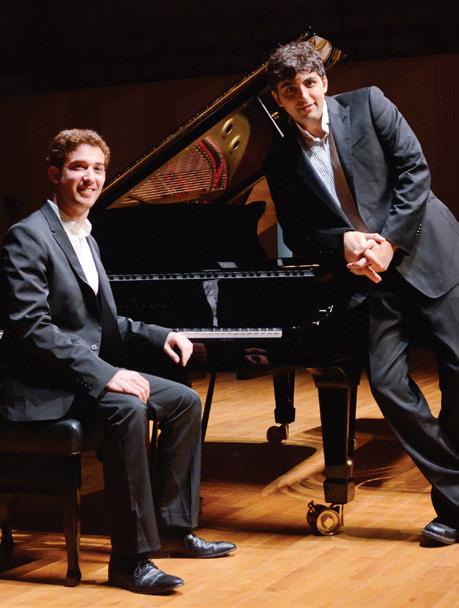


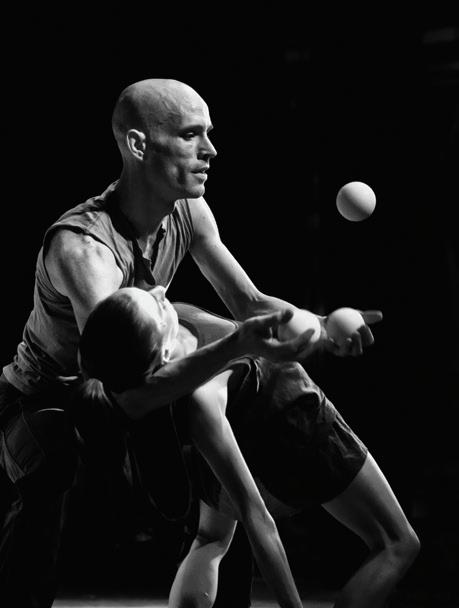
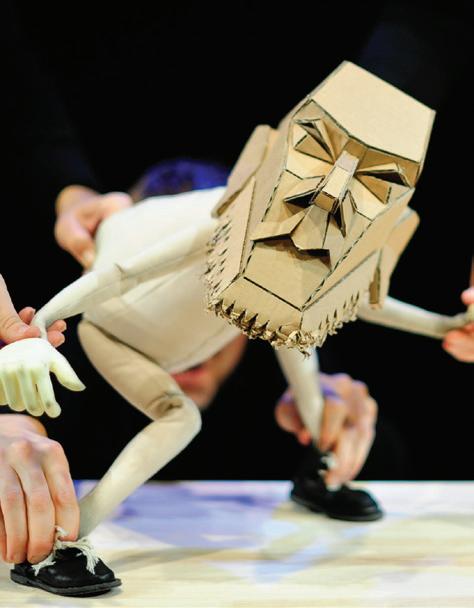
VOL 3 NO 2 MEMBERS MAGAZINE JUNE— AUGUST 2014 RINGLING INTERNATIONAL ARTS FESTIVAL, OCTOBER 15-18,
2014
Steven High Executive Director
This past January 2nd was the first day of work for The Ringling’s new Chief Conservator, Barbara Ramsay. Prior to accepting her position at The Ringling, Barbara worked in the Washington, DC area for almost fifteen years as Director of Conservation Services at ARTEX Fine Art Services. One of the projects that Barbara coordinated while at ARTEX was the restoration of four monumental Frans De Vos circus banners, which are a part of Howard Tibbals’ collection at The Ringling and are featured in this issue. The De Vos banners were a challenge to conserve, in horrific condition and nearly beyond saving. Over seven years Barbara and her team worked to stabilize the paint and repair the canvas on the banners and soon we will have the opportunity to see these Belgium works of art in an exhibit next November in the Museum of Art. Barbara’s first major project since joining The Ringling staff is also featured in this edition. A portrait by Allan Ramsay, gifted by Christopher Jay Brown, in memory of Ruth Anne Brown, was added to our permanent collection at the end of 2013. The Ringling currently owns a full-length portrait of Miss Mary Lillias Scott by Allan Ramsay and the three-quarter portrait of John Campbell, 3rd Earl of Breadalbane will be a wonderful addition for comparison. Barbara will be working over the next several months to clean and prepare the Ramsay for display in our galleries. We are thrilled to have Barbara as a colleague. I hope you enjoy reading her article The Science of Art
Also featured in The Ringling is the hard working staff of Visitor Services. Led by Mark Morgan, Assistant Director for Visitor Services, this talented staff of employees and volunteers make our visitor’s experience of the highest quality. Mark monitors the entire visitor experience from entrance to departure. He and his team develop staff training and recommend solutions to visitor annoyances. For instance, on our busiest days during March the admission line used to extend down the block. During this past year, through training and the implementation of our Volunteer Ambassador program, the longest wait on our busiest day has been cut in half. There is still much to do to make the visitor experience seamless, but Mark, the visitor service team, and every member of The Ringling staff are dedicated to making your visit to The Ringling exceptional.
This past Memorial Day marks the beginning of this year’s Blue Star Museums collaboration. Developed by the National Endowment for the Arts, Blue Star Families, and the Department of Defense, this program includes more than 2,000 museums in the United States. It offers free admission to the nation’s active duty military personnel (including National Guard and Reserve) and their families from Memorial Day through Labor Day annually. The Ringling is proud to be a partner in this annual program.
5401 Bay Shore Road
Sarasota, FL 34243
ringling.org
Accredited by the American Alliance of Museums
GOVERNOR
The Honorable Rick Scott
THE FLORIDA STATE UNIVERSITY
Dr. Garnett S. Stokes Interim President
OFFICE OF THE PROVOST
Dr. Sally E. McRorie
Interim Provost
COLLEGE OF VISUAL ARTS, THEATRE & DANCE
Peter Weishar, Dean

EXECUTIVE DIRECTOR
Steven High
BOARD OF DIRECTORS
Clifford L. Walters III, Chair
Michael E. Urette, Vice Chair
Michael R. Pender Jr., Treasurer
Jane Skogstad, Secretary
Martin A. Arch
Madeleine H. Berman
Thomas J. Charters
Daniel J. Denton
Rebecca Donelson
George R. Ellis
Kenneth J. Feld
Frances D. Fergusson
Casey Gonzmart
Priscilla M. Greenfield
Patrick J. Hennigan
Paul G. Hudson
Dorothy C. Jenkins
Thomas W. Jennings Jr.
Patricia R. Lombard
Thomas B. Luzier
Nancy J. Parrish
Roger C. Pettingell
Michéle D. Redwine
Ina L. Schnell
Linda Streit
Howard C. Tibbals
James B. Tollerton
Helga M. Wall-Apelt
EX-OFFICIO BOARD MEMBERS
Wilmer I. Pearson, Chair, Volunteer Services Advisory Council
Joan T. Uranga, Chair, Docent Advisory Council
Steven High Executive Director
2
TABLE OF CONTENTS
JUNE — AUGUST 2014
Clockwise: José Campeche (Puerto Rican, 1751–1809). Doña María de los Dolores Gutiérrez del Mazo y Pérez, circa 1796. Oil on canvas, 34 x 25 in. (86 x 64 cm). Brooklyn Museum, Gift of Lilla Brown in memory of her husband, John W. Brown, by exchange, 2012.45. Behind Closed Doors: Art in the Spanish American Home, 1492–1898 is organized by the Brooklyn Museum.

Allan Ramsay, 1713-1784, Portrait of John Campbell, 3rd Earl of Breadalbane, oil on canvas, 1738. A Gift to The Ringling Museum by Christopher Jay Brown in memory of Ruth Anne Brown, 2013.

SN11382
On Exhibit: A Rare European Circus Banner by Frans De Vos

Syd and Annie on the bridge of the Turtle Beach house, 1975

Ruben from the ROAR Program

ringling.org 3 4 A Gift to the Art Museum: Portrait of John Campbell, 3rd Earl of Breadalbane 5 Meet Barbara Ramsay. The Ringling’s New Conservator 6 From Conservation Laboratory to Gallery An exhibition of Rare European Circus Banners by Frans De Vos R1-R16 CALENDAR-AT-A-GLANCE 8–9 Behind Closed Doors: Art in the Spanish American Home, 1492-1898 10 Close up with Annie Solomon 11 The RIAF Conversation Continues 12 Visitor Services Spotlight 13 The Ringling Docent Program 14 Family Focus 15 Membership: Friends Groups
ON THE COVER & PAGE 11: The Intergalactic Nemesis, Photo courtesy of Artist; Keigwin + Company, Photo by Matt Murphy / Featuring Emily Schoen and Kile Hotchkiss; Duo Amal, Photo Courtesy of Artist; Vijay Iyer Trio, Photo by Jimmy Katz; The Pedrito Martinez Group, Photo by Michael Weintrob; Tangram, Photo by Ben Hopper; The Table, Photo Courtesy of Artist.
A GIFT TO THE MUSEUM OF ART PORTRAIT
OF JOHN CAMPBELL, 3RD EARL OF BREADALBANE
The Museum is pleased to announce the gift of the Portrait of John Campbell, 3rd Earl of Breadalbane, painted in 1738 by the Scottish portrait painter Allan Ramsay (1713–1784), generously provided by Mr. Christopher J. Brown of Sarasota. Though born in Edinburgh, Ramsay established a thriving London workshop where he mainly painted portraits of aristocratic Scots. One such sitter was the subject of the Museum’s new painting, John Campbell, 3rd Earl of Breadalbane and Holland (bap. 1696, d. 1782). Campbell was an important figure in English diplomacy and politics. In 1720 Campbell was appointed ambassador to the court of Denmark, and while in Copenhagen, he was styled Lord Glenorchy and invested with the Order of the Bath, an English chivalric order. He wears the pink and white robes of the Order in this portrait, as well as a golden chain on which the insignia of the order hangs, and, also, a massive tassel. Campbell was married in 1730 to Arabella Pershall (1702/3–1762), and the following year became ambassador to Russia. Ramsay painted two portraits of Arabella around 1740—you can visit one of those two portraits at the Yale Center for British Art in New Haven, Conn., although the second of the two portraits of Arabella remains in the private collection. John Campbell, 3rd Earl of Breadalbane is a fine addition to the Ringling’s collection of eighteenth-century English portraits, which already includes works by Reynolds, Gainsborough, Lawrence, Raeburn, and Watson, as well as a full-length portrait attributed to Ramsay. With its compelling physiognomy, intriguing sitter, and elaborate costume, this work will surely be at home in the gallery devoted to English portraits of the eighteenth century.

4
Dr. Virginia Brilliant, The Ulla R. Searing Curator of Collections
Allan Ramsay, 1713-1784, Portrait of John Campbell, 3rd Earl of Breadalbane, oil on canvas, 1738. A Gift to The Ringling Museum by Christopher Jay Brown in memory of Ruth Anne Brown, 2013. SN11382
MEET BARBARA RAMSAY
THE RINGLING’S NEW CONSERVATOR
Barbara A. Ramsay, The Ringling’s new Chief Conservator brings almost four decades of experience in art conservation with a focus on managing, directing, and carrying out complex conservation treatments on easel paintings, murals, historic painted finishes, and modern objects. Her experience includes fifteen years as Director of Conservation Services at ARTEX Fine Art Services – the largest private fine art services firm in the United States – and eighteen years as a conservator of paintings at the National Gallery of Canada, five of those years as Senior Conservator of Fine Art. She holds a Master of Art Conservation degree in paintings and paper from Queen’s University of Kingston, Canada, and a Bachelor of Science in Biology from the University of Toronto. She is a professional associate of the American Institute for Conservation, a board-accredited member of the Canadian Association of Professional Conservators, and a Fellow of the International Institute for Conservation of Historic & Artistic Works.

Ramsay’s work will include the examination and treatment of paintings, as well as care of the wide range of objects in the collection. Preventative conservation as well as restoration treatment will be important aspects of her responsibilities as chief conservator. The extraordinary museum collection, the state-of-the-art conservation laboratory, and the institutional support for an active conservation program at The Ringling intrigued her and influenced her decision to accept the position. She hopes to build a team of conservators to oversee the museum’s extensive permanent collection, which includes not only the museum of art but also Ca’d’Zan, the Historic Asolo Theater, and a unique collection of circus objects.
She shared with us some of the important aspects of museum conservation.
THE SCIENCE OF ART
THE IMPORTANCE OF CONSERVATION
Barbara A. Ramsay, Chief Conservator
Museums have the privilege and responsibility of acquiring, housing, preserving, and making accessible a broad range of cultural objects—from ancient manuscripts to modern sculpture, from Old Master paintings to contemporary electronic installations, and everything in between. Each object has been created using particular materials and technologies, resulting in inherent frailties and sensitivities that can accelerate its deterioration, alter its meaning, or lead to total loss.
Preservation or conservation of these objects relies on the adoption of best practices by all staff within the Museum, with a focus on preventative care, safe housing, and proper use and handling. It also depends on the expertise of art conservators who possess the specialized skills and knowledge that enable them to identify and mitigate potential risks to objects, or propose and carry out appropriate conservation treatments tailored to the specific needs of each object.
Systematic examination by the conservator is often augmented by scientific analysis that can assist in identifying the materials and construction of objects, thereby helping
to assess their physical condition as well as the nature and causes of deterioration or damage. Conservation research provides the necessary evaluation of materials that conservators can employ to conserve or restore Museum objects safely.
The scientific approach to conservation must also be balanced by a humanistic or aesthetic approach to treatment decisions, taking into consideration the historical, art historical, or cultural context, style, and appearance—applying artistic sensibility and connoisseurship to the examination and treatment of cultural objects. Collaboration among conservators, art historians, and conservation scientists engenders an interdisciplinary approach that benefits not only the work done by these professionals but ultimately the state of the cultural objects themselves.
The blending of art and science has led to the development of art conservation as an essential Museum function that not only guarantees respect for the integrity of the original object but also helps to ensure the preservation of collections for generations to come.
ringling.org 5 CONSERVATION
1936) was descended from a French family of traveling performers. From 1900 to 1906, Frans De Vos was the director of a small traveling circus himself. Considered one of the most outstanding scene designers and circus facades painters, Frans De Vos worked primarily in Balegem, Belgium, where he painted the façade for Circus Demuynck as well as other murals and an altar painting in the town.



6
Details of damaged banner before conservation treatment.
Circus banner after conservation treatment.
FROM CONSERVATION LABORATORY TO GALLERY
An Exhibition of Rare European Circus Banners by Frans De Vos
Deborah Walk, Curator of the Circus Museum
Nov 7 — Mar 29, 2015
Museum of Art, Searing Wing
A set of early twentieth century circus banners created by artist Frans De Vos will be exhibited beginning November 7, 2014 in the Museum of Art’s Ulla R. and Arthur F. Searing Wing. At an impressive size of 9’ x 9.5’, these rare works of art were intended for use as circus entrance banners or stage backdrops in circus acts, giving a clear sense of the spectacle of the early European circus and the excitement in store on stage for circus patrons. Purchased in 1989 by philanthropists Howard and Janice Tibbals and graciously gifted to The Ringling in the early 1990’s, this unique collection was too unstable to be exhibited in its current condition. Were it not for Howard Tibbals’ keen eye and commitment to preserving the rich history of the circus, these banners might have been discarded or lost entirely.

In 2004 the oil on canvas banners were sent to professional conservators in the ARTEX Conservation Laboratory in Landover, MD., where they were carefully examined and documented. Led at that time by the Director of Conservation Services, Barbara Ramsay, the conservation team carried out major conservation treatment of all four banners between 2005 and 2012 with the aim of restoring the integrity of the banners so that they would be preserved for the long term and be rendered suitable for display. The set had suffered severe damage over their lifetimes – both structurally (weakening the canvas) and aesthetically (making the images unsightly). Conservators worked together over the seven year span of time to restore the appearance of the banners to a state that was much closer to what the artist originally intended, but not making them appear too perfect or like new. An attempt was made to retain some signs of age, wear, and use that would remain as a testament to the colorful history of the banners.
The Ringling’s Chief Conservator, Barbara Ramsay, shares some conservation highlights.
n Examination and documentation before, during, and after treatment
n Consolidation to stabilize insecure paint layers and canvas
n Elimination of superficial and ingrained grime layers to remove harmful substances and reveal the original paint colors and design
n Removal of hand stitching, multiple layers of canvas patches, and an array of unsavory adhesives that had been used to repair canvas tears in the past
n Reduction of pronounced canvas deformation in the form of creases, folds, puckers, and draws
n Delicate repair of canvas tears and providing of canvas inserts in loss areas
n Structural reinforcement of the upper torn sections of the canvases by adhesive lining
n Infilling of paint loss areas
n Inpainting of fills, creases, and other areas of paint loss, avoiding painting over original paint layers, except where non-removable stains and accretions were lightly overglazed
n Modification of the original wooden mounting bars to enable repeated reattachment or removal for display or storage in future
n Providing recommendations for future care, storage, installation, and display of the banners
ringling.org 7 CONSERVATION
Circus banner after conservation treatment.

8
BEHIND CLOSED DOORS: ART IN THE SPANISH AMERICAN HOME, 1492-1898
Christopher Jones, Assistant Curator of Exhibitions
Oct 24 — Jan 11, 2015
Museum of Art, Searing Wing
This fall, The Ringling will provide visitors a rare glimpse into the lavish private spaces of the Spanish Colonial world. The Museum will host Behind Closed Doors: Art in the Spanish American Home, 1492–1898, a traveling exhibition organized by the Brooklyn Museum of Art, and the Searing Galleries will transform to mimic the layout of a typical elite home from one of the centers of Spanish Colonial power. Viewers will see the sumptuous range of luxury goods that the privileged and powerful of the New World collected and displayed in order to project their status and fashion identities.
I had the pleasure of seeing Behind Closed Doors in Brooklyn last fall, and am excited that we will be bringing such a unique experience to The Ringling. Based on exhaustive scholarly research, the exhibition offers a range of objects grouped as they would have been in the home, allowing us to understand how social spaces were defined and what sorts of messages they communicated. Reception rooms, for example, greeted visitors with conspicuous representations of Spanish and indigenous authority. Staterooms resplendent with finery provided guests with comfort during social functions while adjacent estrados were exclusively feminine spaces where women socialized and entertained. These were often
furnished with Oriental carpets, writing desks, and beautiful mahogany tables. We also get a feel for more private and exclusive spaces, such as bedrooms and family chapels, which were defined by the objects displayed and used therein.
Behind Closed Doors provides an innovative perspective on Spanish Colonial culture. Although that era is perhaps most widely known through its exceptional tradition of religious art and iconography, exhibition curator Rich Aste has focused on the Brooklyn Museum’s extensive collection of elite secular objects such as furniture, decorative objects, and portraiture. Further, similar contemporary objects and art works from Colonial North America and Europe are included for comparison, giving us a sense for how styles, techniques, and designs traveled across cultures and were interpreted for local uses and tastes.
Surveying the art in this exhibition, we comprehend Spanish Colonial culture within its global context, at the crossroads of trade routes between Europe and Asia, and at the heart of one of the greatest empires on Earth. Objects like Brooklyn’s recently acquired biombo screen embody this historical reality. The folding screen tradition originated in Japan, but Mexican high society so admired them that local artisans began producing them,
EXHIBITIONS
José Campeche (Puerto Rican, 1751–1809). Doña María de los Dolores Gutiérrez del Mazo y Pérez, circa 1796. Oil on canvas, 34 x 25 in. (86 x 64 cm). Brooklyn Museum, Gift of Lilla Brown in memory of her husband, John W. Brown, by exchange, 2012.45.
Behind Closed Doors: Art in the Spanish American Home, 1492–1898 is organized by the Brooklyn Museum.
sometimes with local flourishes, such as mother-of-pearl inlay. Unlike their Japanese counterparts, biombos were often decorated with distinctly Western subject matter, often drawn from European engravings as sources. These rare screens are beautifully ornate, functional, and an exclusively New World phenomena.
Some of the most intriguing objects and artifacts in the exhibition are unique to the Americas and show the continued importance of Pre-Columbian culture. Anacus and uncus painstakingly handwoven tunics worn by elite Peruvian women and men, respectively, are forms that come from Inca tradition and iconography, and continued as markers of authority into the Colonial era. In Mexico, links to indigenous aristocracy still held sway in Colonial society, and illustrated genealogies, such as the Lienzo of Ihuitlan, or even painted portraits of ancestors could serve as visual evidence for claims to power. Race, class, and status were complicated, malleable traits in Colonial society, and often dependent on what one displayed, possessed, or consumed.
It is particularly exciting to bring Behind Closed Doors to The Ringling as it is an opportunity for us to also think about the Spanish Colonial legacy here in Florida. La Florida was part of the Viceroyalty of New Spain from 1513–1763 and 1783–1821. Much of the material culture from Florida’s Colonial era has long since perished, and as a center of power Florida’s capital, St. Augustine, paled in splendor compared to Mexico or Lima. But perhaps it is not too far-fetched to imagine that some Colonial elites here in Florida shared the same tastes and sensibilities as their contemporaries across the Caribbean and the Gulf of Mexico.
ringling.org 9
Close-up
with
ANNIE SOLOMON
Dr. Matthew McLendon, Curator of Modern and Contemporary Art
In 1946, Annie Solomon settled in Sarasota with her husband, artist Syd Solomon. At the suggestion of Alfred Barr, Solomon’s work was the first by a contemporary artist to be exhibited and collected by the Ringling Museum. Other artists followed, and the Sarasota Artist Colony was born. As the first member of the new Friends of Art of Our Time group, Annie sat down with curator of Modern and Contemporary Art, Dr. Matthew McLendon, to discuss why she is a member and why contemporary art is vital to the Museum and the community.
Matthew McLendon: Why are you a member of The John and Mable Ringling Museum of Art?
Annie Solomon: My life here is because of The Ringling Museum of Art, my husband had two one-man shows there; it’s part of my heart to be at The Ringling Museum.

MM: What is your favorite benefit of membership?
AS: Well, looking at paintings, of course. Members get in free to the Museum and can go whenever they like. The grounds
have changed a lot since we first came here, too. I remember Syd taking pictures of Fletcher Martin [an American painter] riding that bull. Of course, you really shouldn’t do that.
MM: No, you really shouldn’t, but in those days I bet Syd could get away with it.
AS: I love spending time on the grounds now and seeing families enjoying the estate.
MM: Have you seen the new David F. Bolger Playspace? There are so many children
enjoying it; it was an instant success.
AS: No, I haven’t seen that yet, but I will get down there are soon as I can. It sounds great! Oh, and I love the Turrell Skyspace! I’ve seen it six times and always bring outof-town guests to see it. I’ve seen it in every atmospheric condition, once with the moon, once with the rain, once in the cold, I just love it. It’s different every time.
MM: One of my greatest joys at The Ringling has been seeing Joseph’s Coat embraced by our community. I love that it has its own fan base of repeat visitors. Now, Annie, I bet you enjoy the members’ openings, too.
AS: Oh yes I do (said with a twinkle in the eye)! I love seeing my friends and so many new faces now. There really are a lot of new people becoming members and supporting the Museum. It’s so important.
MM: If you were encouraging someone to be a member of The Ringling, what would you say to them?
AS: Well, it’s necessary for the Museum to have people looking at paintings of course, and they’ll learn so much there. They can learn about the history of art, our important circus history, they can enjoy the Historic Asolo Theater, there is so much to enjoy and be gained by being a member. In fact, I’m encouraging some people right now to join!
MM: Annie, you are not only a long-time member of The Ringling, you are the first member of the new Friends of Art of Our Time group. Why is contemporary art important to you and to the Museum?
AS: I think it’s very important because it is what we are living. We have all this technology in our lives now, we need something beautiful to look at. We need to be reminded about the best in humanity, you’re certainly not going to get that in the news.
MM: I couldn’t agree more, Annie. Now, in the 68 years you’ve been in Sarasota and have been visiting The Ringling, what was your favorite exhibition?
AS: Well, I suppose I should say my husband’s [laughs]. Those were great, but I also remember walking around The Art of Food with the first Director, Chick Austin. That was really special.
MM: Thank you, Annie!
AS: My pleasure, this was fun.
10
Syd and Annie on the bridge of the Turtle Beach house, 1975
THE RIAF CONVERSATION CONTINUES

Dwight Currie, Curator of Performance




As the Ringling International Arts Festival (RIAF) continues to emerge as a dynamic platform for the art of performance, defining moments from the festival’s history continue to inform its future. Who can forget Meow Meow body-surfing her way into our hearts, or Tim Fain stepping into the spotlight to transport us with his virtuosity, or Doug Elkins and Friends celebrating the joys of Fräulein Maria, or most significantly, Mikhail Baryshnikov in a pas de deux with our memories? It is, of course, to Mr. Baryshnikov that we owe a debt of gratitude for so many memorable moments on the RIAF stages.
Equally as memorable are the moments created offstage by festival goers who have embraced an environment that is uniquely RIAF’s own. With multiple venues within walking-distance, patrons emerging from one performance are likely to meet friends who are about to enter another. In those moments of passing, a conversation begins. “What did you just see?” “What did you think?” “Should we try to get tickets for tomorrow?” “What are you seeing this evening?” “We saw that yesterday afternoon.” “Why don’t we get together for dinner and talk about it all then?”
It is this conversation – The RIAF Conversation, if you will – that gives our festival its most distinctive characteristic. It was with an ear to past conversations and the intent to encourage more that we developed our plans for 2014. Thirty performances of seven productions will be staged in four venues during a three and one-half day period. It is a diverse and inclusive roster of artists and productions who were selected for their broad appeal and contagious energy. Each affords the viewer a generous point of entry wherein engagement is immediate and compelling. Collectively, the productions speak to one another in ways that will encourage The RIAF Conversation to begin.

During RIAF 2014, we will speak of the power of art to cross borders and reconcile differences, be it between one pianist from Israel and another from Palestine (Duo

Amal) or a ballet dancer and a juggler in Tangram. Tangram will lead to discussions of puppetry, and we will talk about which stage is larger – the confines of The Table or the imaginative reaches of the universe in The Intergalactic Nemesis. And thoughts on imagination will evoke insights into the richly layered and complex jazz compositions of the Vijay Iyer Trio, and we will compare and contrast that music to the intricate Rumbas of The Pedrito Martinez Group – and from there we will wonder at the phenomenon of seeing the music in the witty, stylish, and sensuous dancing of Keigwin + Company. We might even be brave enough to talk about our own impromptu performances in Bolero Sarasota
Whatever the content, there will be a conversation. And as long as that conversation continues, so will RIAF.
WELCOME NEW SENIOR DEVELOPMENT OFFICER SUSAN SIGMAN

Susan K. Sigman joined The Ringling as Senior Development Officer in February 2014. In this capacity, her principal responsibilities include oversight of The Ringling Annual Fund program, corporate sponsorships, and major gift fundraising. This includes a focused effort on creating sponsorship opportunities to support RIAF, New Stages and the overall Art of Performance programming at The Ringling.”
“I am thrilled to be joining The Ringling. The strong community of support for visual and performing arts in Sarasota is inspiring. I look forward to working with our members and donors to expand our creative programming:
Prior to joining The Ringling, Susan served as Senior Director of Communications for the Florida State University Foundation. In that role, she directed the Foundation’s marketing and communications efforts, developing strategy and overseeing a team of communications professionals in design, print and web communications, branding, and social media. Previously, she spent more than eight years as an Account Director servicing a variety of clients at advertising agencies in Atlanta and Kansas City, Mo.
Susan earned a bachelor’s degree in communications with an emphasis on public relations from the University of Kentucky.
For more information on RIAF sponsorship opportunities and other ways to support The Ringling, contact susan.sigman@ringling.fsu.edu 941-374-0214 (cell) 941-359-5700 +1-5806 (office)
ringling.org 11
VISITOR SERVICES SPOTLIGHT
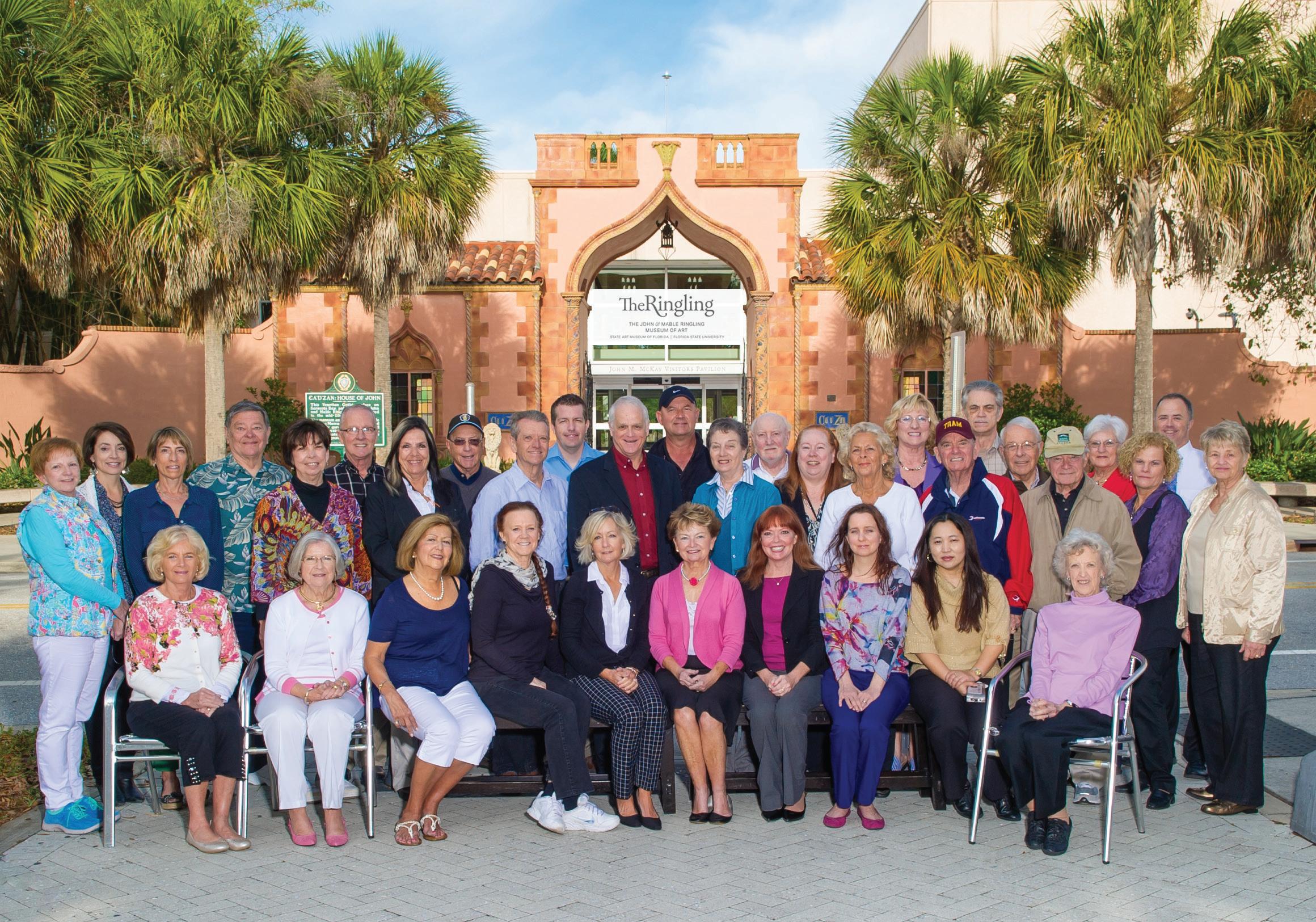 Mark Morgan, Assistant Director of Visitor Services
Mark Morgan, Assistant Director of Visitor Services
We welcomed more than 340,000 visitors last year to The Ringling. This past season, our numbers continued to climb as the cold winter weather ushered our beloved Snowbirds and other visitors southward earlier than normal. We also experienced a tremendous increase of children and families visiting in response to the installation of The David F. Bolger Playspace.
The “wow factor” of our collection, buildings, and grounds provides years of lasting memories. But I believe we must also provide an equally positive visitor experience in order to foster repeat visits and generate word-of-mouth awareness.
The visitor experience often begins long before the actual visit. But for most, it starts with a beaming smile and a
resounding, “Welcome to The Ringling!” Whether we are putting on wristbands, driving trams, offering directions, or giving tours, those on the front line play a vital role in creating a lasting, memorable experience.
This past year, we conducted hospitality training for our volunteers (Ambassadors, tram drivers, and Docents), and staff
12 VISITOR SERVICES
(admissions, box office, Museum store, restaurants, and Museum attendants). We assessed visitor flow and streamlined the process by eliminating wristbands and creating a separate check-in area for visitors on Mondays when the Museum of Art is free. We also established reduced admission for Museum Members’ guests. This Summer, we will be updating estate signage, identifying areas for additional training, and seeking ways to further improve the experience.
I recently became a Member to support the Museum, but also to experience first-hand the registration and check-in processes our Members encounter when visiting. Through this experience, we have already identified ways in which we can enhance the Membership process in the Visitors Pavilion including ways to fine tune check-in for special events.
What
our visitors say is important to us.
We have been rated the #1 attraction in Sarasota consistently on TripAdvisor®, and we were recently voted the second best Florida attraction by USA Today readers.
It is our goal to shape the visitor experience in such a way that every guest—whether young, old, Member or international traveler—feels welcome, and has enjoyable memories for years to come.
ENHANCING THE VISITOR EXPERIENCE,
ONE TOUR AT A TIME
Erin Griswold, Docent Program Coordinator
More than 100,000 Museum visitors participated in a Docent-led tour last fiscal year. On any given day this important group of volunteer life-long learners gives general and private tours of the Museum of Art, Ca’ d’Zan mansion, the Bayfront Gardens, and Circus Museum. The Ringling utilizes more than 130 highly trained Docents. Their efforts help enhance the quality of the Museum experience for visitors, as well as their appreciation of the collection.
Docents cover highlights of the permanent collections and special exhibitions. They also provide private group tours for adults, targeted tours for school children, and specialty tours for visitors with mobility, vision and hearing challenges. To fully prepare for the assignment of helping audiences of all ages connect with the collections and The Ringling Legacy, Docents pursue an intensive course of study and continuing education.
The Education Department delivers a thorough training program for Docents with support from Museum Curators and other

guest presenters. The content focuses on the Museum’s permanent collections and special exhibitions, visitor engagement skills, accessibility techniques, learning theory, Museum education best practices, customer service, and scholastic program engagement.
Understanding the amount of time and energy these volunteers dedicate gives one a greater appreciation for their tremendous efforts. Flexibility and a visitor-centric approach and solid public speaking skills are a must, and our volunteers and our Docents deliver the highest quality of each.
CREATING A LEGACY SUPPORTING OUR DOCENTS
Immediately upon retiring to Sarasota in September of 2002, Joan and Jose’ Uranga began their training as Docents for the Museum of Art, Ca’ d’Zan, and the Circus Museum. They felt the legacy of John and Mable Ringling warranted their time as volunteers and that the Museum was vital to the culture of Sarasota. As the two became involved the Docent program, Jose’ became qualified as a School Tour Docent and Joan began to serve on the Ringling Board of Directors as the delegate from the Docent Advisory Council. The couple has found a passion and a local family in the docent corps over the past 12 years and as volunteers, members, and leaders. This year, as a commitment to that family, Joan and Jose’ established a fund to support Docent training, stating, “…this endowed fund supports docent training and enrichment as we believe the Docent corps at The Ringling serves a crucial role in enhancing our visitors’ enjoyment of this great Museum.” We extend our deepest gratitude to the Urangas for their contributions to The Ringling.


ringling.org 13
JOAN AND JOS É URANGA
EDUCATION
A MUSEUM FOR ALL AGES
Maureen Zaremba, Curator of Education
As a museum professional, I have quoted statistics and provided endless anecdotes throughout my career about the value of the arts in a robust curriculum. Empirical evidence shows that engagement with any art form produces higher achieving students. The arts encourages creativity, problem solving, and “thinking out of the box”, skills all children will need in our rapidly evolving world.
In addition to being a museum professional, I’m also a Mom. Traveling with Mom meant our family went to any and every museum that crossed our path. I learned to negotiate the amount of time we spent in a museum and also became thoughtful about how to engage all of us in an exhibition or collection.
My children are grown. An artist and a scientist, they are both avid museum goers and we still enjoy the experience together. The parent part of me looks at The Ringling as an amazing array of opportunities for young families.
Families can search for animals in art in the museum galleries then look for the animals on our grounds including foxes, otters, squirrels, and many varieties of birds. They can discover the amazing acrobatic feats of circus performers and then create their own performance in our new Bolger Playspace. A relaxing day can include a stroll along the Bolger Promenade. With little ones in strollers, they can admire the beauty of Ca d’Zan, then enjoy a picnic on the Terrace overlooking Sarasota Bay. While The Ringling offers organized family programs such as ROAR! this Summer, it is also a place for families to let their imagination rule. Families are encouraged to slow down their pace, explore and discover this magical museum in their own backyard.
CLOSE-UP WITH DOTTIE TARBELL
A SPOTLIGHT ON FAMILIES AT THE RINGLING

We asked one of our youngest members – Dottie – what she enjoys about The Ringling. She had a lot to share! Dad, Rob Tarbell, and Dottie joined The Ringling in May 2013.
To The Bolger Playspace!
Climb to the top of the slide, cover our eyes, scream all the way down, then do it again! Climb on the little house and call monkeys on the intercom! Take a breather in the basket swings – whew. Back to the BIG slide!


Lunchtime!
To the Banyan Café for yummy treats.
Off to Circus Museum!
Hunt for monkeys in the Banyan trees on our way. Straight to the high wire! Do tricks on the pony! Shoot the cannon! How high can it go? Drive the clown car – it’s so tiny!
Pink museum or Courtyard? Courtyard! Find the dancing girl statue.
To the Dwarf Garden!
Play duck duck goose - but they never chase me. Silly statues.
Daddy needs coffee…. Pick up clown noses in the gift shop on our way upstairs to Starbucks.
Plan our next adventure….Summer Circus!
Daddy and Dottie had a happy-ever-after-day at The Ringling!

14
FAMILY FOCUS
MEMBERS
CUSTOMIZE YOUR MEMBERSHIP
BECOME A FRIEND OF THE RINGLING
2014-2015 FRIENDS PROGRAMMING
Members of our Friends Groups enjoy unique opportunities to learn about specific areas in The Ringling’s collections. Annual Dues are $125 per person and one must be a current member of The Ringling to participate. See upcoming programming to the right. Or call 941-360-7330 for more information.
Friends of the Ringling Legacy

Celebrate the history of John and Mable Ringling and their vision for their private home, art museum, and the circus that made it all possible.
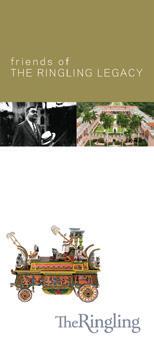
Friday, November 7, 2014
De Vos Exhibition Preview with Barbara Ramsay
Thursday, January 15, 2015
Exploring The Ringling Collection with Dr. Virginia Brilliant
Monday, April 14, 2015
Tea in Mable’s Rose Garden
Friday, June 5, 2015
Exploring the designs of Dwight James Baum, Architect of Ca’ d’Zan
Friends of the Art Library
Celebrate the great resource that is The Ringling Art Library.

Saturday, September 13, 2014
Inside the Vault-The Austin Obsession
Saturday, November 15, 2014
Inside the Vault-The personal library of John Ringling

Saturday, February 14, 2015
Inside the Vault-Fabulous French Fashion
Saturday, May 16, 2015
Inside the Vault-A Modern Reading
CIRCLE MEMBERS Did you know that as a Circle member, you have complimentary access to a membership in our new Friends program?
n Curator circle members receive one complimentary Friends group
n Director circle members receive two complimentary Friends groups
n Chairman circle members receive three complimentary Friends groups.
We encourage you to deepen your connection with The Ringling and its diverse collections with these exciting Friends programs. Please attend the upcoming events and make your selections now!
For more information – contact Sharon Freddes at 941-359-5821 sharon.freddes@ringling.fsu.edu
Friends of Art of Our Time
Celebrate contemporary and modern art featured in The Ringling’s permanent collection.
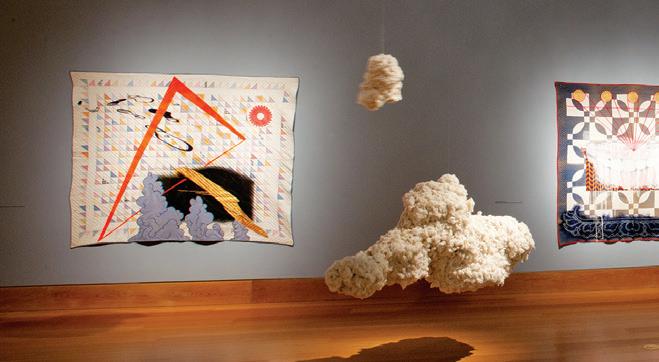
Tuesday, October 14, 2014
Backstage Preview for RIAF 2014
December 4-6, 2014
Meet us in Miami -Art Basel Miami Beach (ABMB)

Wednesday, February 11, 2015
Insight with an Artist of Re-Purposed
Saturday, April 18, 2015
The Conversation Continues - Curating the Art of Our Time
Friends of Asian
Art
Celebrate the Asian Art represented in The Ringling collections.
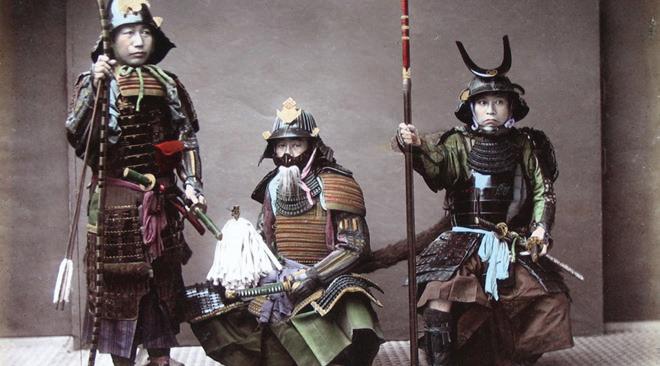
Thursday, August 14, 2014
Seeing the Unseen Exhibition Preview with Dr. Fan Zhang
Thursday, November 20, 2014
Reception and Artist Q&A with Li Wei (date subject to change)

Saturday, March 14, 2015
Private lunch with noted Asian art scholar
Thursday, April 23, 2015
Asia: Here, There and Everywhere
Presentation and reception
ringling.org 15
Exhibition gallery photo, Sanford Biggers, Codex. Mar 30, 2012 – Oct 14, 2012. Photography by Giovanni Lunardi. All work copyright Sanford Biggers, 2012 Kusakabe Kimbei, Samurai in Armor, Japanese,late 19th century. Promised gift of Dr. Helga Wall-Apelt, TR2007.2823.468
The Ringling MUSEUM STORE

Enjoy great shopping for unique gifts. Daily 10:00 am – 5:30 pm; Thursdays until 8:00 pm. 941-359-5700 x1110
CIRCUS FUN FOR THE FAMILY
Children can create their own magical circus experience at home with these fun and creative circus toys from the Museum Store.
Ringling Elephant and Ruben the Lion cheer as the circus train comes to town!
Tote $4.95, Plush lion or elephant $13.95, wooden train set $35.00. Create a fantasy circus or anything else with over 95 Joan Miro and Alexander Calder-inspired Shapescapes, $36.00.
Come one, come all. Bring home the fun of the circus with this Circus Matching Game

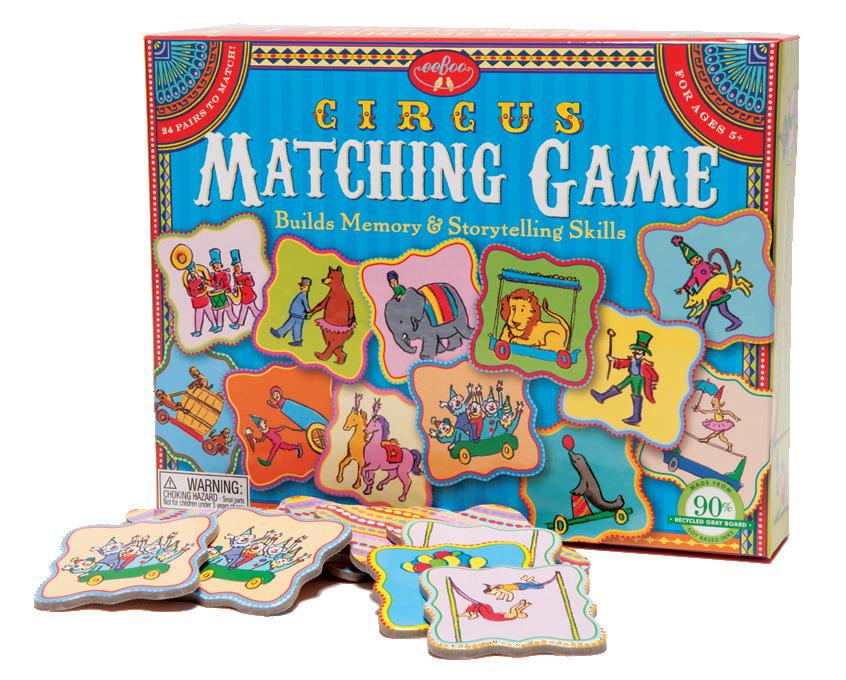
Build memory and storytelling skills with 24 pairs of playfully illustrated scalloped tiles to match, for ages 5 years and up, $16.95.
Share the circus with the littlest of listeners with these delightful and durable board books. These engaging books are created for babies and toddlers. A Day at the Circus or Dr. Seuss’ All Aboard the Circus McGurkus, $6.99 each.

MEMBERS RECEIVE 10% OFF PURCHASES ALL YEAR!


The John and Mable Ringling Museum of Art 5401 Bay Shore Road Sarasota, FL 34243 The Ringling’s exhibitions and programs are sponsored in part by the State of Florida, Department of State, Division of Cultural Affairs, the Florida Arts Council and the National Endowment for the Arts, by a grant from the Sarasota County Arts Council, Tourist Development Council and the Sarasota Board of County Commissioners. ISSN 2165-4085 Non-profit Organization U.S. Postage PAID Permit # 698 Lebanon Junction, KY






























 Mark Morgan, Assistant Director of Visitor Services
Mark Morgan, Assistant Director of Visitor Services





















